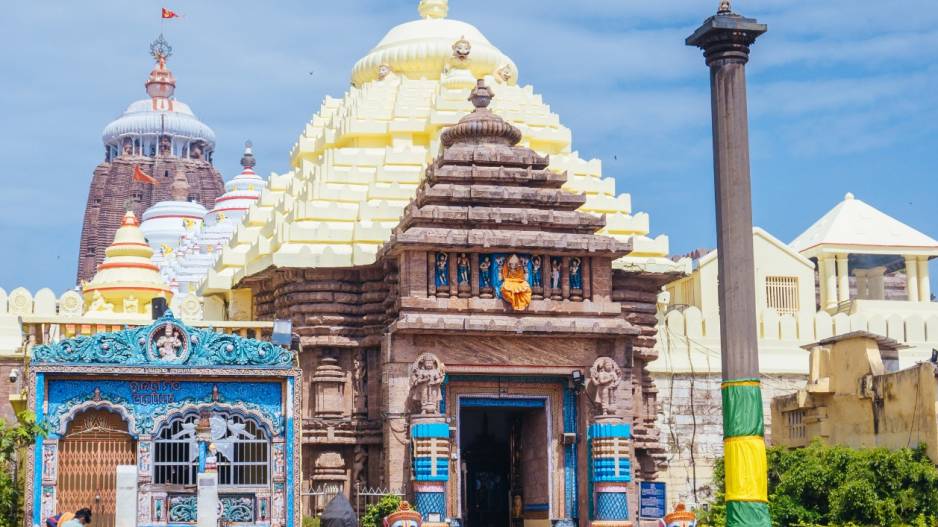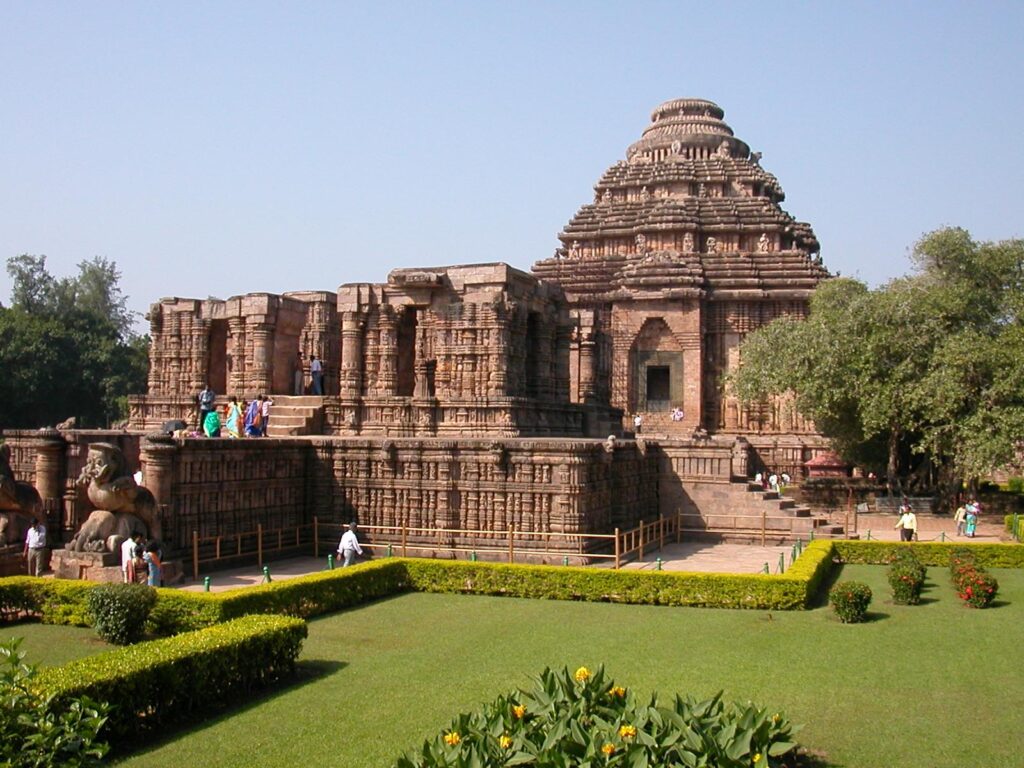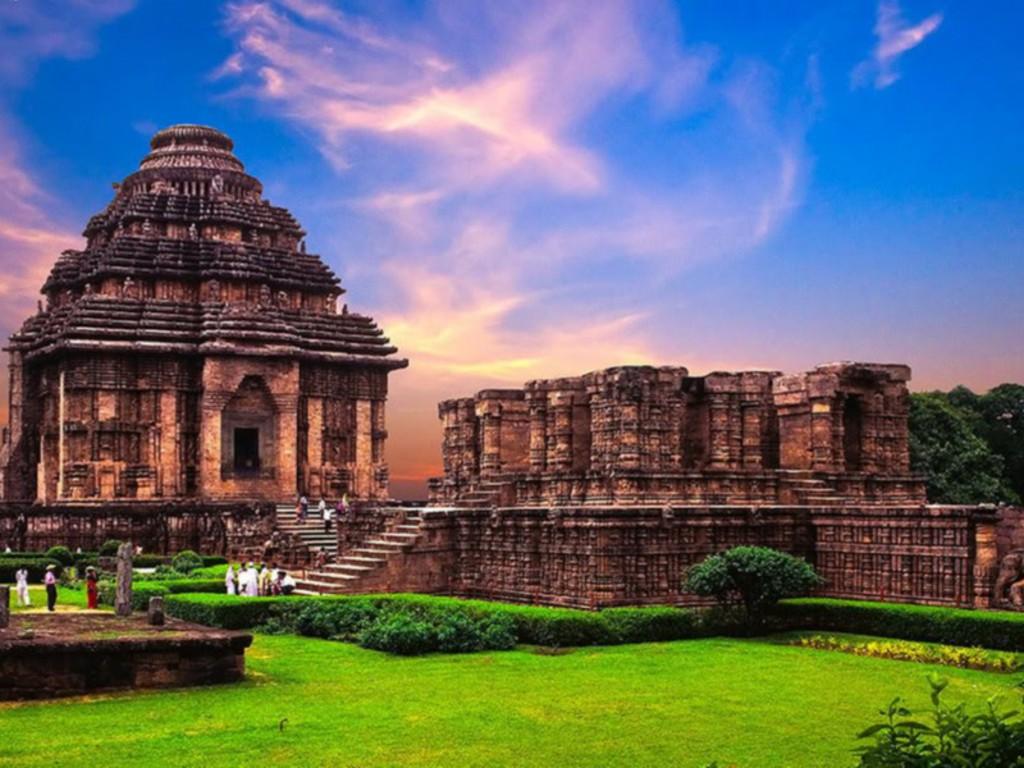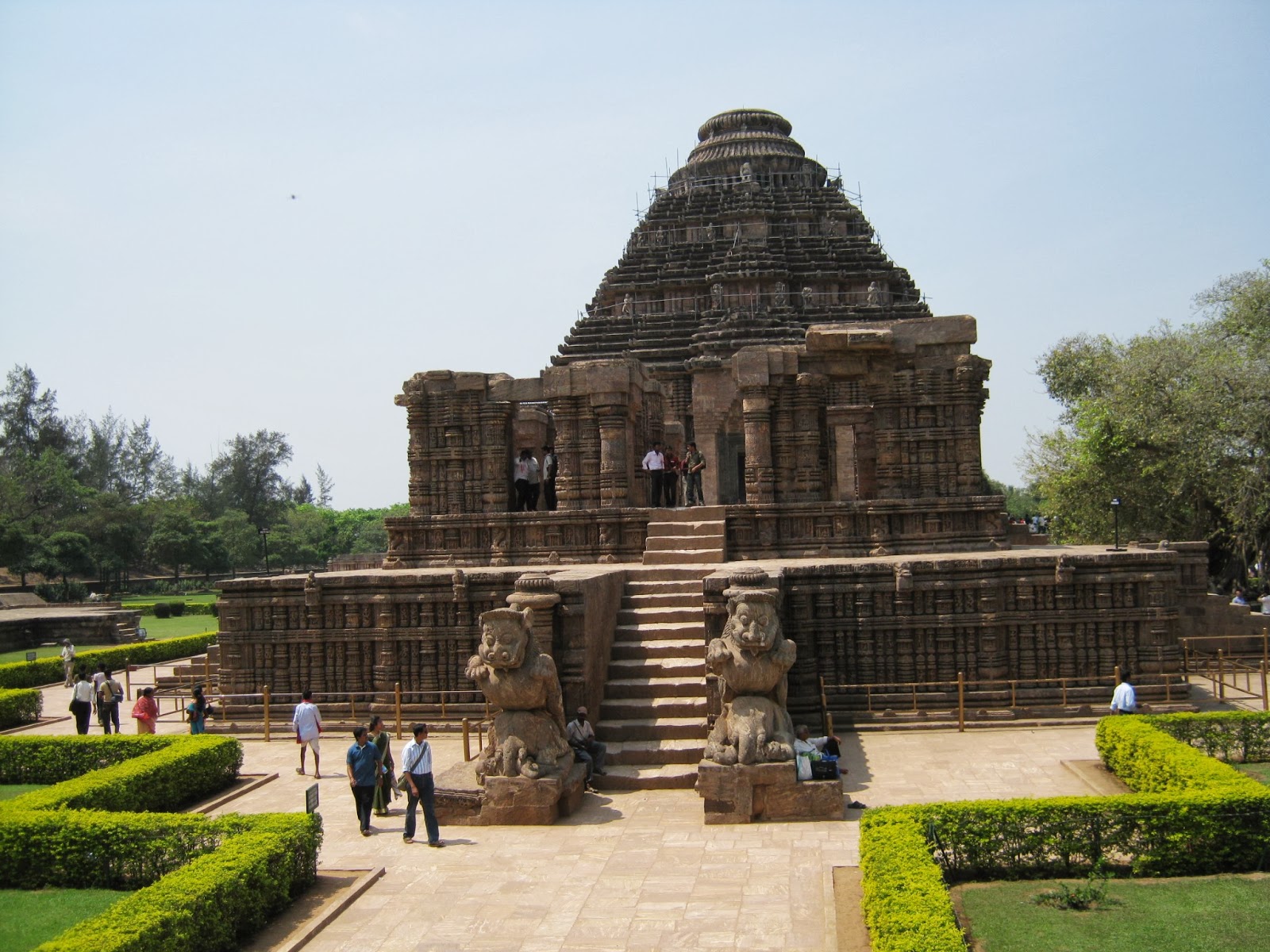Tourist Places in Odisha. Odisha is a state on the eastern side of India. It is known for its rich culture, old temples, beautiful beaches, wildlife parks, and lively festivals. People often call it “India’s Best Kept Secret” because it has many different tourist spots to explore, including notable buildings and stunning nature. Here is a simple guide to some of the top places to visit in Odisha. The guide is organized by type of attraction and location. It includes essential information about what makes each place special, what you can see there, and helpful tips for visitors.
Tourist Places in Odisha give a perfect blend of spirituality, heritage, nature, and artwork. From ancient temples and historical forts to pristine beaches and steeply priced forests, the kingdom caters to every type of tourist. Whether you’re a pilgrim, an adventurer, or a tradition enthusiast, Odisha promises a memorable and enriching experience.
The Jagannath Temple: A Tourist Place in Odisha
When we think of Odisha, one name stands out: Lord Jagannath. This temple in Puri is much more than just a religious site. It is a famous landmark, a symbol of faith, and a fantastic example of ancient building skills. People from India and all around the world visit this temple for its mysteries, unique culture, and spiritual atmosphere.

The Jagannath Temple was built in the 12th century by King Anantavarman Chodaganga Deva. He belonged to the Eastern Ganga dynasty. The temple is dedicated to Lord Jagannath, who is seen as a form of Lord Vishnu or Krishna. Over the years, the temple has survived many attacks, natural disasters, and the wear of time. It remains an important pilgrimage site, along with Rameswaram, Badrinath, and Dwarka.Explore the spiritual vibe, intriguing stories, and impressive architecture of one of India’s most famous temples.
Lord Jagannath, Tourist Places in Odisha
Tourist places in Odisha. Lord Jagannath is a unique form of a god. Unlike regular idols, he has big, round eyes and a black body, and he doesn’t have hands or legs. He is often seen with his brother, Balabhadra, and his sister, Subhadra. Every 12 to 19 years, these wooden figures are replaced in a special ceremony called Nabakalebara. This ceremony stands for rebirth and the idea that life goes on, which is an essential belief in Sanatan Dharma (a traditional Indian philosophy). The Jagannath temple has faced many challenges, including invasions and natural disasters, but it remains strong. It is one of India’s four essential pilgrimage places, known as Char Dham, along with Rameshwaram, Badrinath, and Dwarka.
Kalinga-Style Architecture of Tourist Places in Odisha
The temple is a beautiful example of Kalinga architecture. Its central tower, the Vimana, is about 65 meters (214 feet) tall.
Key Features of Tourist Places in Odisha
- Main Sanctum (Garbhagriha): This is where the three main gods are kept.
- Jagamohan (Assembly Hall): A place for people to gather and pray.
- Nata Mandir (Dancing Hall): Used for cultural events and performances.
- Bhoga Mandap: A spot where food (Mahaprasad) is offered to the gods.
The entire temple is surrounded by two large walls, Meghanada Pacheri and Kurma Bedha, representing safety and sacredness.
Simple Facts About Jagannath Temple: Tourist Places in Odisha
The Jagannath Temple is a special place with some strange mysteries that even scientists can’t explain.
Even though the temple is huge, it never casts a shadow at any time of the day. No one knows why.
The flag on top of the temple blows in the opposite direction of the wind. This doesn’t happen anywhere else.
No birds or planes fly directly above the temple, even by the coast.
Usually, the wind blows from the sea to the land during the day. But in Puri, it blows the other way, which is unusual.
Rath Yatra: The Big Chariot Festival of Tourist Places in Odisha
Rath Yatra is a famous and exciting festival held in a temple annually. During this festival, large chariots are made to carry the gods out of the temple to the Gundicha Temple for the summer. After nine days, the gods return to the main temple.
Key Points:
- Over 1 million people come to Puri to join in the celebration.
- New chariots are built each year using special trees and following rituals.
- Pulling the chariot is thought to remove evil deeds and bring good blessings.
- This is a special time when even non-Hindus can see the gods, as the idols are taken outside their usual place.
Best Time to Visit to Tourist place in Odisha
It’s best to stay away from August and September because there is a lot of rain during the monsoon.
The best months to visit are from October to March, when the weather is nice.
Plan your trip for June or July if you want to see the Rath Yatra festival, but book your travel early!
2. Konark Sun Temple: Tourist Places in Odisha
Tourist Places in Odisha. The Konark Sun Temple, situated in Konark, Odisha, is a living chronicle of India’s past. This UNESCO World Heritage Site, constructed in the 13th century CE, is a striking example of ancient Indian temple architecture, a tribute to Surya, the Sun God. Often dubbed the ‘Black Pagoda‘ by European sailors, this temple, with its dark coloration and magnetic properties, is a proud symbol of India’s rich cultural heritage, standing the test of time.

Historical Background of Tourist Places in Odisha
The Konark Sun Temple was commissioned by King Narasimhadeva I of the Eastern Ganga dynasty around 1238–1250 CE, during the zenith of Odisha’s cultural and political influence. The temple was constructed to celebrate the king’s military victories, particularly over the Muslim invasions in eastern India, and to serve as a grand offering to Surya, the deity believed to bestow prosperity and divine favour.
The name “Konark” is derived from two Sanskrit words: Kona (corner or angle) and Arka (sun), signifying the temple’s location in the northeastern corner of Odisha, where the sun’s rays first touch the land. The temple was not only a religious site but also a political statement of the Ganga dynasty’s power and devotion to Hindu traditions.
Historical accounts suggest that the temple was partially damaged over centuries due to invasions, natural calamities, and neglect. By the 19th century, much of the main sanctum had collapsed, and the temple was abandoned. The British colonial administration and later the Archaeological Survey of India (ASI) undertook efforts to preserve and restore the site, though the temple remains incomplete today.
Architectural Grandeur of a Tourist Places in Odisha
The Konark Sun Temple, a colossal chariot of the Sun God, is a unique architectural concept that distinguishes it from other Indian temples. The temple is primarily built from Khondalite stone, a type of metamorphic rock. This material allowed for the creation of intricate carvings that, despite weathering, have stood the test of time, a testament to the temple’s enduring beauty.
Key Architectural Features:
- Chariot Design:
- The temple is conceptualized as a massive chariot drawn by seven spirited horses, representing the seven days of the week or the seven colours of sunlight. Only four of the horse sculptures remain intact today.
- The chariot is mounted on 24 elaborately carved wheels, symbolizing the 24 hours of a day or the 12 months of the year (each wheel representing a half-month). The wheels are functional sundials, capable of telling time with remarkable accuracy by tracking the shadow cast by the sun.
- The wheels are intricately designed, with spokes, hubs, and decorative motifs, each wheel measuring about 10 feet in diameter. The carvings on the wheels include floral patterns, animals, and mythical figures.
- Structural Layout:
- The temple originally consisted of three main components:
- Sanctum Sanctorum (Vimana): The main shrine, which housed the deity of Surya, was a towering structure estimated to be over 200 feet tall. It collapsed in the 19th century, and only its base remains.
- Assembly Hall (Jagamohana): The audience hall, still intact, is a massive pyramidal structure with intricate carvings. It serves as the primary surviving structure of the temple.
- Dance Hall (Natamandira): Located in front of the Jagamohana, this hall was used for ritualistic dances and performances. Its platform and pillars are adorned with carvings of dancers and musicians.
- The temple faces east, aligning with the rising sun, a deliberate orientation to capture the first rays of sunlight during sunrise.
- The temple originally consisted of three main components:
- Intricate Stone Carvings:
- The temple’s walls, pillars, and wheels are covered with thousands of detailed carvings, showcasing a blend of religious, mythological, and secular themes.
- Religious Motifs: Depictions of Surya in various forms, along with other deities like Vishnu, Shiva, and Durga, are prominent. The Sun God is often shown riding a chariot or standing in regal postures.
- Erotic Sculptures: Similar to Khajuraho, Konark features erotic carvings that symbolize fertility, human life, and the Tantric traditions prevalent during the period. These sculptures, though a small fraction of the total carvings, have drawn significant attention.
- Secular Themes: Scenes of daily life, royal processions, hunting expeditions, and animals (elephants, lions, horses) reflect the socio-cultural context of 13th-century Odisha.
- Mythical Creatures: Figures of nagas (serpents), Gandharvas (celestial musicians), and kinnaras (half-human, half-bird beings) add a fantastical element to the iconography.
- Sculptural Highlights:
- Chlorite Stone Statues: Three life-sized statues of Surya, carved from chlorite stone, are positioned to capture the sun’s rays at dawn, noon, and dusk. These statues, known as the “Morning Sun,” “Midday Sun,” and “Evening Sun,” depict Surya in dynamic poses with attendants.
- Colossal Sculptures: Large standalone sculptures of elephants, lions, and horses are scattered across the temple complex, symbolizing strength, courage, and divine energy.
- Miniature Details: Tiny carvings of flowers, jewellery, and geometric patterns demonstrate the unparalleled skill of the artisans.
Astronomical and Scientific Significance of Tourist Places in Odisha
The Konark Sun Temple is a Tourist Place in Odisha that is not only a religious and artistic masterpiece but also a sophisticated astronomical observatory. Its design incorporates advanced knowledge of astronomy, mathematics, and geometry, reflecting the scientific prowess of ancient Indian architects.

- Sundial Wheels:
- The 24 chariot wheels serve as sundials, with their spokes and carvings designed to cast shadows that indicate the time of day. By observing the shadow’s position, one can calculate time with precision down to minutes.
- The wheels are aligned to track the sun’s movement across the sky, making the temple a functional calendar and clock.
- Solar Alignment:
- The temple’s east-west orientation ensures that the first rays of the rising sun illuminate the sanctum, creating a spiritual and visual spectacle.
- The placement of the Surya statues corresponds to the sun’s position at different times of the day, showcasing an understanding of solar angles.
- Cosmological Symbolism:
- The seven horses symbolize the seven celestial bodies (planets) known to ancient Indian astronomers or the seven chakras in Vedic philosophy.
- The 24-wheel and 12-month cycles reflect the lunar and solar calendars, integrating both systems into the temple’s design.
- Mathematical Precision:
- The temple’s proportions, symmetry, and measurements adhere to the principles of Vastu Shastra and Shilpa Shastra, ancient Indian texts on architecture and design.
- The intricate carvings and structural balance required advanced geometric calculations, indicating a deep understanding of mathematics.
Cultural and Religious Significance of Tourist Place in Odisha
Tourist Places in Odisha: The Konark Sun Temple is a profound symbol of Hindu devotion, artistic excellence, and cultural identity. Its dedication to Surya reflects the prominence of sun worship in ancient India, as the Sun God was revered as the source of life, energy, and divine authority.
Religious Importance:
The temple became a prime pilgrimage middle in medieval India, attracting devotees who sought Surya’s advantages for fitness, prosperity, and non-secular enlightenment.
Rituals, dances, and gala’s had been held in the Natamandira, with Odissi dance performances devoted to Surya being a key characteristic.
The temple’s iconography integrates factors of Vaishnavism, Shaivism, and Shaktism, showcasing the syncretic nature of Hinduism at some point in the length.
Cultural Legacy:
The temple stimulated Odisha’s creative traditions, in particular in sculpture, dance, and structure. The Odissi dance form, with its graceful movements and expressive gestures, draws proposal from the temple’s carvings.
The temple’s chariot design encouraged later Indian architecture and has become a routine motif in Hindu temple artwork.
Konark remains an image of Odisha’s cultural heritage, celebrated in literature, art, and gala, just like the Konark Dance Festival, held annually to showcase classical Indian dance bureaucracy.
Global Recognition:
As a UNESCO World Heritage Site, the temple draws students, historians, and travellers from around the world, highlighting India’s contributions to international artwork and structure.
Its standard appeal lies in its combo of spirituality, technological know-how, and aesthetics, transcending spiritual and cultural barriers.
Decline and Preservation of Tourist Places in Odisha
The decline of the Konark Sun Temple commenced within the medieval duration due to a mixture of factors:
Invasions: Muslim invasions in jap India throughout the 15th–16th centuries reportedly broke the temple, though ancient proof is inconclusive.
Natural Calamities: The temple’s proximity to the Bay of Bengal exposed it to cyclones, saltwater corrosion, and erosion, weakening its structure.
Structural Collapse: The essential sanctum’s disintegration, probably because of susceptible foundations or an earthquake, caused the temple’s abandonment by the 19th century.
Looting and Neglect: The temple became plundered for its stones and metals, and the shortage of preservation elevated its deterioration.
In the early twentieth century, the British colonial government initiated conservation efforts, followed by the Archaeological Survey of India (ASI) after India’s independence. Key maintenance measures consist of:
Filling the Jagamohana with sand in 1903 to prevent its fall apart.
Restoring and stabilizing the Natamandira and other systems.
Clearing debris and excavating the website online to find buried sculptures.
Ongoing upkeep to defend the temple from weathering and tourism-associated wear.
Despite those efforts, the temple remains incomplete, with the main sanctum misplaced for all time. The surviving structures continue to awe visitors with their grandeur and artistry.
Current State and Tourism of Tourist Places in Odisha
Today, the Konark Sun Temple is undoubtedly one of India’s most visited historical websites, drawing travellers, pilgrims, and researchers. The temple complicated is maintained with the aid of the ASI, with landscaped gardens and a museum showing excavated artifacts, which include sculptures and architectural fragments.
Visitor Experience:
The temple is open from dawn to sunset, allowing site visitors to witness the interplay of mild and shadow on its carvings.
Guided excursions and audio publications offer insights into the temple’s records and symbolism.
The Konark Archaeological Museum, located nearby, houses relics and offers a deeper understanding of the temples beyond.
Challenges:
Weathering and erosion continue to threaten the temple’s carvings, requiring regular conservation.
Heavy vacationer footfall poses risks to the web page, prompting restrictions on touching or climbing the structures.
Debates over reconstruction versus preservation persist, with some advocating for rebuilding the lost sanctum.
Festivals and Events:
The Konark Dance Festival, held yearly in December, features performances of Odissi, Bharatanatyam, and other classical dances against the temple’s backdrop.
The Chandrabhaga Mela, a nearby fair held close to the Chandrabhaga Beach, celebrates the temple’s legacy and draws pilgrims.

